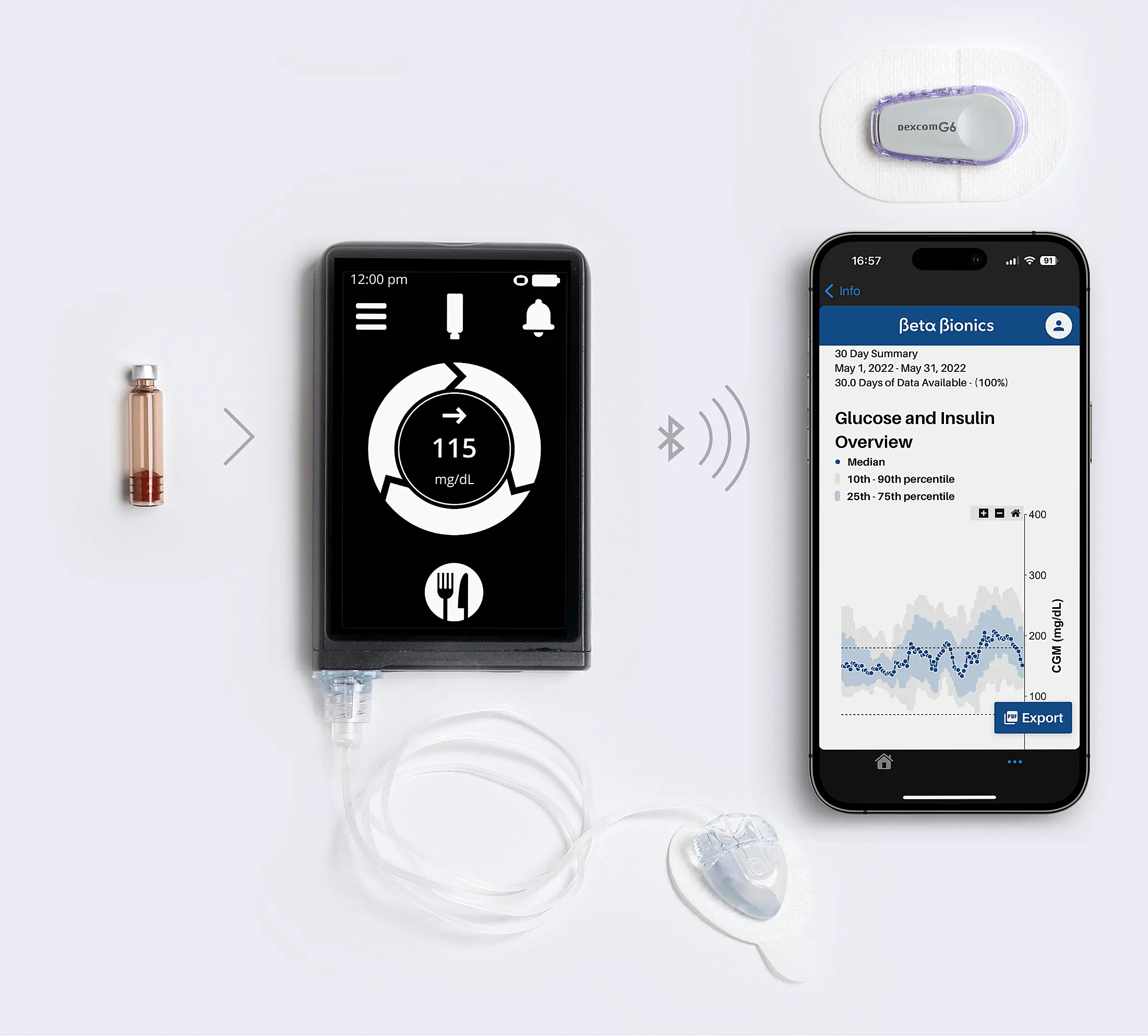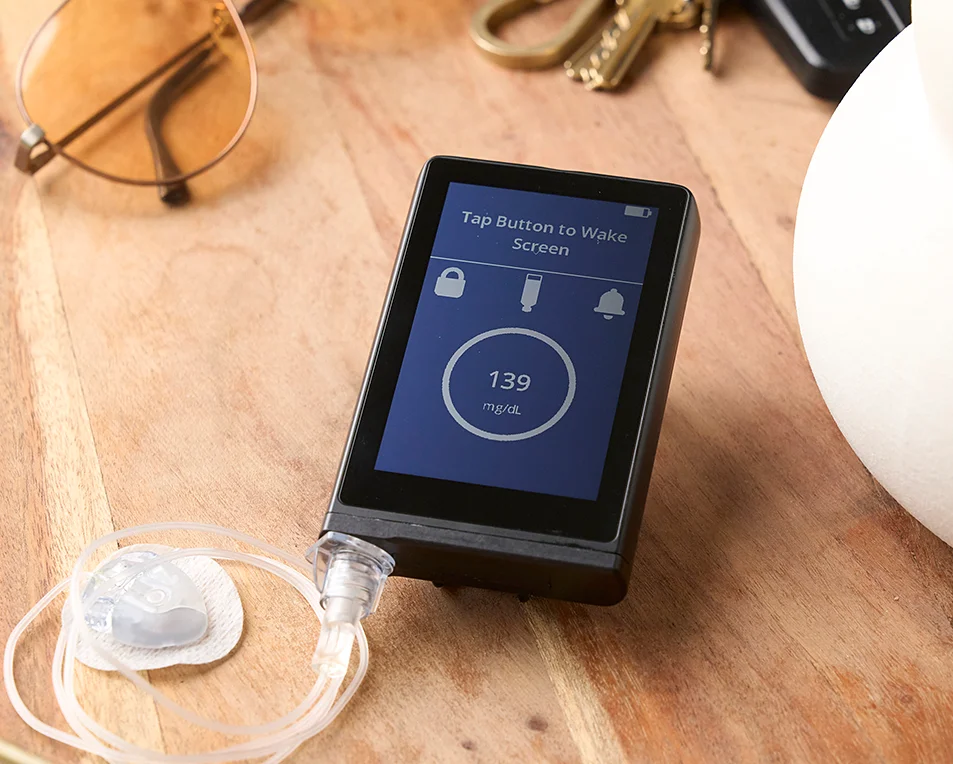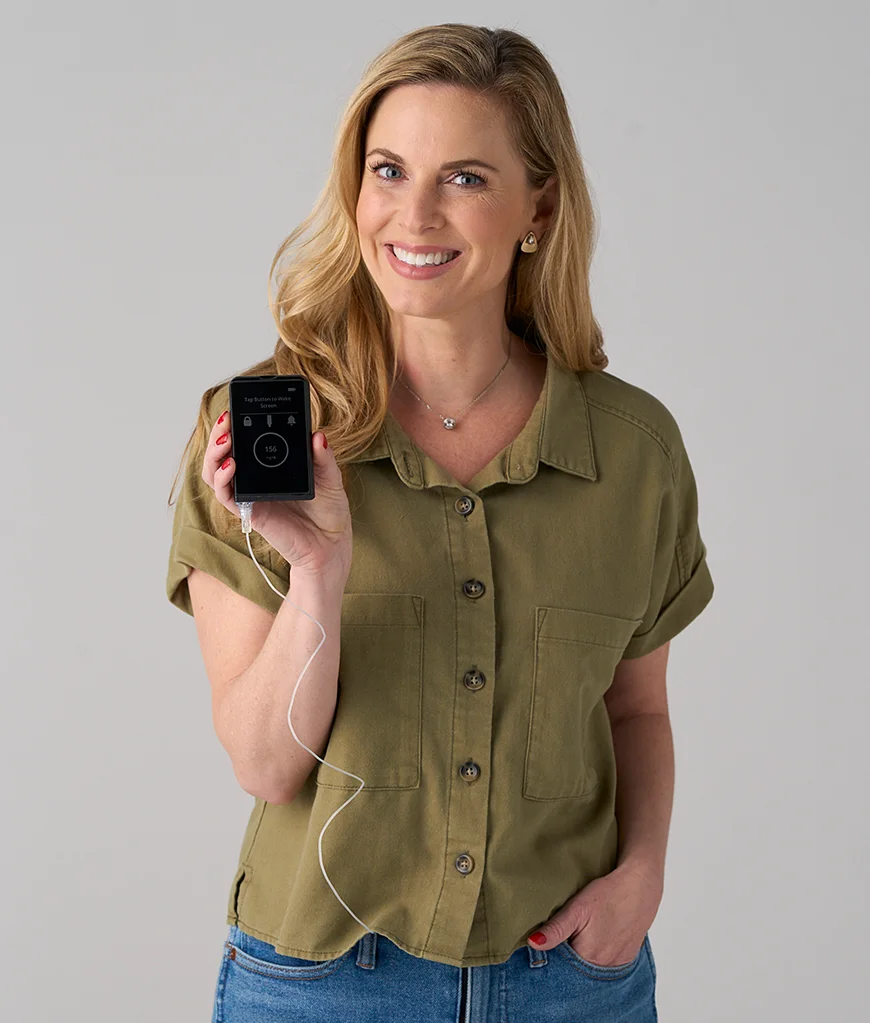Ready to GO BIONIC?
May 26, 2023
Are you ready to go BIONIC?
Beta Bionics received an FDA label on 22-5-2023 for their insulin-only iLet closed-loop system for people with type 1 diabetes ages 6 and up.
This closed-loop system is revolutionary because it no longer requires mathematical calculation or carbohydrate counting.
Commercialization would start within days! In America, you can already sign up as a user now.
Disclaimer: Please note that the iLet is currently unavailable in Europe, and there is no information available regarding its future availability.
The only number the iLet needs is your weight.
"iLet users enter their weight and then “GO BIONIC” with their diabetes management." - Newsletter Beta Bionics 22-5-2023
The iLet is a unique closed-loop system because
- you can't/shouldn't do carbohydrate counting anymore,
- and you no longer can/should set a basal insulin rate, carbohydrate ratio and/or insulin sensitivity.
So it is a closed-loop system that automates 100% of the insulin delivery and allows you to start immediately with just the entry of your weight.
The iLet works with insulin PumpCarts

The iLet system consists of 3 parts:
- the iLet insulin pump which, according to the picture, appears to work with pre-filled insulin PumpCarts,
- the algorithm on the pump (the iLet Dosing Decision software),
- and a Dexcom G6 sensor.
The iLet was tested with Novorapid, Humalog and Fiasp.
The website also shows a Beta Bionics app on a cell phone, but this appears to be only a "view" app. There is no mention of bolus capabilities from the phone.
The readout software also appears to be from Beta Bionics itself.
The necessary education is minimal
"One can suppose that with much of the math that plagues diabetes management being alleviated with the bionic pancreas, numeracy skills would not preclude system adoption. In addition, whereas endocrinologists tend to be concentrated in certain geographic regions in the United States, persons with type 1 diabetes live across the country, which means that many seek care from primary care providers. Although primary care providers may be eager to offer the best tools, the complexity of the available systems to date has not infrequently impeded prescription. The feasibility of simplified technologies to overcome this issue is palpable." - dr. Sherr, Editorial NEJM 2022
As a user, you only need to enter the carbohydrate portion and meal type for the meal.
- For the meal type you should choose from breakfast, lunch or dinner
- For the carbohydrate portion you should choose from normal portion, less than normal or more than normal.
In the study methods, you can find how people are educated about this meal portion.
- Choose "less than normal" if you are going to eat about half of a normal portion.
- Choose "more than normal" if you are going to eat about half as much as a normal serving.
- If you are going to eat more than a 1.5 serving, you can also enter multiple meal portions for the same meal.
- If you are going to eat less than half of a regular meal, you should not enter anything.
So as a user, you should not count carbs, but be "carb aware."
If you forgot to indicate a meal, and it's been more than 30 minutes, the idea is that you should not enter it again.
In that case, you will just have higher glycemies for a while. This is because there is no way to give manual correction boluses.
Furthermore, you can only set the target value per time block. You can choose between
- normal (120 mg/dl or 6.7 mmol/l),
- lower than normal (110 mg/dl or 6.1 mmol/l)
- and higher than normal (130 mg/dl or 7.3 mmol/l).
Startup and use of the iLet is thus very simple. This makes this closed-loop system more accessible to a broader population of people with type 1 diabetes.
This is important especially in America, as many people with type 1 diabetes there are just followed by their primary care physician.
The necessary follow-up is minimal
"This degree of automation relieves healthcare providers from the burden of reviewing blood glucose and CGM data in order to adjust pump settings, allowing them to spend more time discussing other needs". - dr. Steven Russell, CMO Beta Bionics
The iLet automatically adjusts to your changing insulin needs.
However, it is recommended to update your weight in the system if it increases or decreases by more than 15%.
- Setting a higher weight will allow the algorithm to release more insulin.
- Updating the weight will not reset the learning algorithm.
Separately, the study did note that the number of unannounced contacts with the diabetes team was significantly higher with the iLet than without the iLet.
REVERT: from autonomous dosing with CGM to autonomous dosing without CGM

You cannot use the iLet pump as a manual pump. In fact, you cannot set a basal insulin rate and/or bolus calculator on it.
However, that does not mean that the iLet pump stops working if sensor data is not available.
If sensor data is not available, the iLet will switch from autonomous dosing with CGM to autonomous dosing without CGM.
- The iLet will then switch to a fixed basal insulin rate determined by the system.
- It will estimate the meal insulin as usual based on the meal type and portion entered.
- If you enter a finger prick glucose value, it can then give a correction bolus and/or increase or pause the basal insulin.
In their largest study, there was a reasonably good "time in auto mode."
- The time in autonomous dosing with and without CGM 96%.
- The time in autonomous dosing with CGM was 89%.
Reasons why the iLet failed were an empty insulin reservoir, during insulin reservoir replacement, during an occlusion alarm, if insulin delivery was paused and if a "motor alarm" was active.
Results are similar
This "separate category" of closed-loop system has a similar effect on your glycemic control than the other closed-loop systems:
- the TIR (70-180 mg/dl or 3.9-10 mmol/l) increases by about 10% (from 51% to 65%),
- the TBR (<70% or <3.9 mmol/l) hovers around 2% (1.8%),
- and the time <54 mg/dl or <3 mmol/l is < 0.5% (0.3%).
Thus, as with the other closed-loop systems, your glycemic control will improve significantly with the iLet, yet hypoglycemia will still occur (on average 30 minutes per day).
And severe hypoglycemia also remains possible even if you wear a closed-loop system.
What's next?
Right now, Beta Bionics will focus on the successful launch of the iLet insulin-only, but they also have other exciting projects in the pipeline:
- Bihormonal iLet: there is room in the iLet insulin pump for a reservoir for glucagon, and the first results with this were even better than with the insulin-only iLet. A larger study with this "Duo" should start this year, but has already been postponed several times due in part to problems with glucagon stability.
- Expanding the indication to people with type 2 diabetes: Beta Bionics is said to have already done some (unpublished) studies suggesting that the iLet would also be a very good therapy for people with type 2 diabetes.
- Study on starting iLet through the GP: A U.S. study is currently underway in which the iLet is being started through the GP in 40 adults with type 1 diabetes. Beta Bionics' goal is to give GPs the confidence to prescribe the iLet (as in the U.S. a lot of people with type 1 diabetes are being treated by GP's)..
- Study on use of iLet in people with cystic fibrosis-related diabetes: results of this study will be shared soon. The Cystic Fibrosis Foundation would also be interested in financially supporting further research with the iLet.
Beta Bionics also has partnership with Sensionics, but it is still unclear if and when the Eversense will be included with the iLet.
- There was already 1 successful study shown in which the iLet worked with the 90-day Eversense CGM.
- Currently, the Eversense E3 is not yet approved for use with a closed-loop system, but an FDA-labeled iCGM is expected in the near future.
In any case, it is clear that it will not stop here, and that Beta Bionics will become a major provider of closed-loop systems for people with diabetes.
There is no news so far if and when the CE mark has been applied for, but we suspect this will only be a matter of time.
With iLet closed-loop system there has been a giant leap forward for the management of type 1 diabetes. It eliminates much of the computational work usually required to manage this condition and makes it easier for healthcare providers to focus entirely on the needs of their patients. This new closed-loop system brings hope and comfort to people with T1D, while giving them significantly better control over their blood sugars. Beta Bionics has solved an important diabetes problem that will have a major positive impact on patients' lives.
If you are looking for what other closed-loop systems are currently available and what the main advantages and disadvantages are, download the overview of the 10 best closed-loop systems here.
Kind regards,





